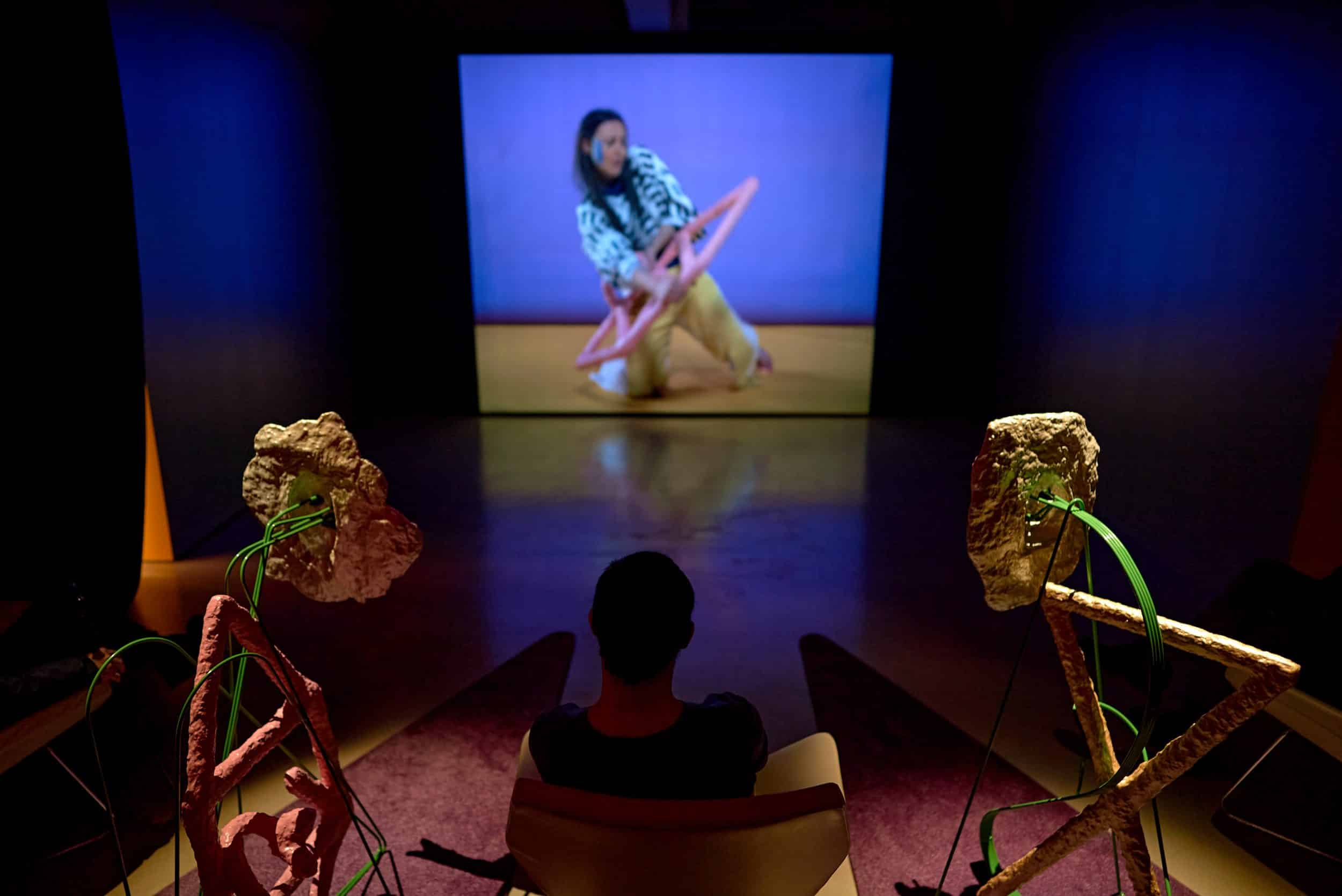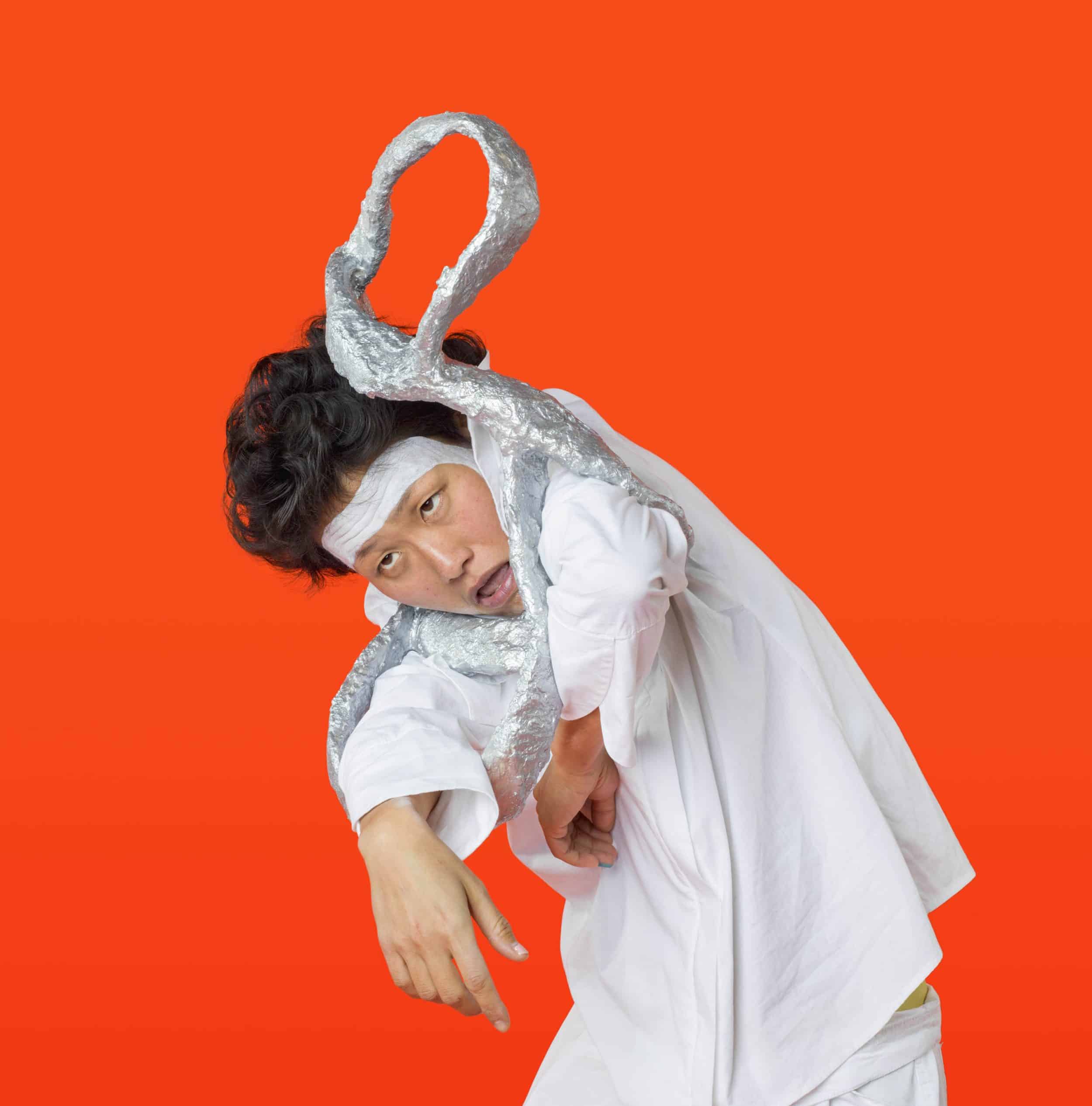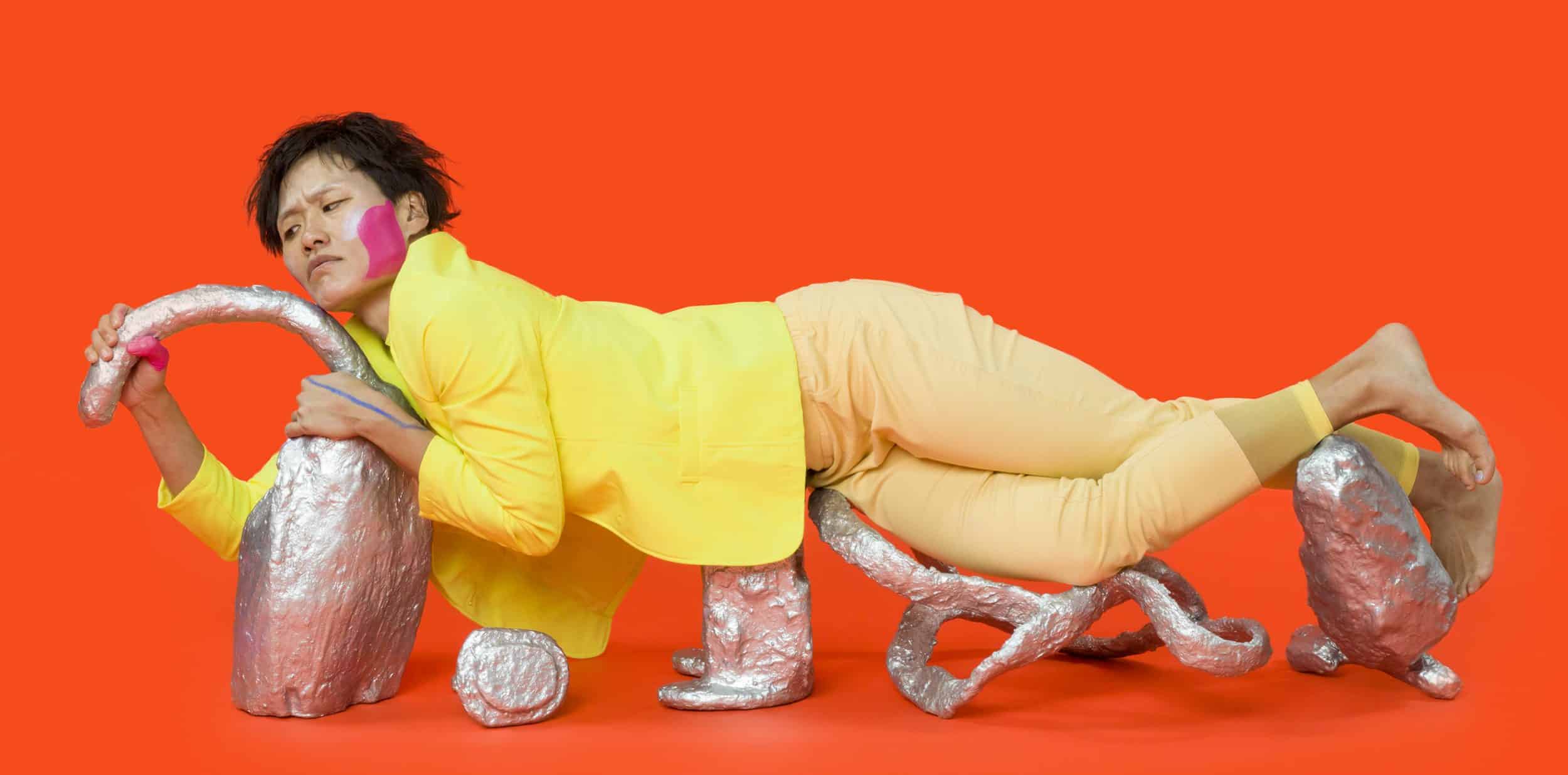About —
Treasures Are Hopes Made Solid to Catch the Light and Also the Dust
For several years, Montreal artists Chloë Lum and Yannick Desranleau have worked collaboratively with dancers and musicians. In the performances and videos they create together, objects play an important role as either allies or antagonists; treated as both extensions of the body and hindrances to its movement.
The photos and videos presented in Treasures Are Hopes Made Solid to Catch the Light and Also the Dust attempt to translate in textual, gestural, and audible form bodily states that are associated with the experience of confinement. When the body refuses to cooperate, when its movements are limited, even painful, because of chronic illness, how else can we escape it? Perhaps by stirring our imagination through reading or by paying attention to objects and our surrounding reality.
For this first show at the Musée d’art de Joliette, Lum and Desranleau continue their literary explorations with a series of recent works conceived as meditations inspired by the writings of Sylvia Plath and Clarice Lispector; the performers’ gestures and sung narratives reference Plath’s highly sonorous writing and Lispector’s rich descriptions.
Production
Camera: Philip Rose
Costume Assistant: Catherine Joyal
Set Assistant: Pierre Richardson
Images in the banner:
© Chloë Lum & Yannick Desranleau, production still, from the series Stills From a Non-Existant Performance, 2019. Performer: Winnie Ho
Chloë Lum & Yannick Desranleau, view of the exhibition Treasures Are Hopes Made Solid to Catch the Light and Also the Dust, Musée d’art de Joliette, 2020. Photo credit: Romain Guilbault.
With the support of the Canada Council for the Arts and the Conseil des arts et des lettres du Quebec.
Biography —
Chloë Lum and Yannick Desranleau are multidisciplinary visual artists based in Montreal, Canada. Their work focuses on theatricality and the choreographic; in their performance work but also in their interest in staging tableaus and working with ephemeral materials that can be said to perform through re-deployment and decay. The duo’s recent works investigate the agency of objects, the material condition of the body, and the transformative potential that bodies and objects exert upon each other. These interests are informed by Chloë’s experience with chronic illness and its effect on their collaboration as well the duo’s exploration of narrative tropes from literature, theatre and television.
They have exhibited widely, notably at the Center for Books and Paper Arts, Columbia College, Chicago; the Musée d’art contemporain de Montréal; the Kunsthalle Wien; BALTIC Centre for Contemporary Art; Whitechapel Project Space, London; the University of Texas, Austin; the Confederation Centre Art Gallery, Charlottetown; the Blackwood Gallery, University of Toronto; and the Darling Foundry, Montreal. Lum and Desranleau are also known on the international music scene as co-founders of the avant-rock group AIDS Wolf, for whom they also produced award-winning concert posters under the name Séripop. Their work is in the collection of the Victoria and Albert Museum, the Montreal Museum of Fine Art, and the Musée d’art contemporain de Montréal.
In 2016, Desranleau was awarded the Claudine and Stephen Bronfman Fellowship in Contemporary Art, and in 2015, the duo was long-listed for the Sobey Art Award.
For more information: www.lum-desranleau.com/
Curatorial Text —
For several years, Montreal artists Chloë Lum and Yannick Desranleau have worked collaboratively with dancers and musicians. In the performances and videos they create together, objects play an important role as either allies or antagonists; treated as both extensions of the body and hindrances to its movement.
The photos and videos presented in Treasures Are Hopes Made Solid to Catch the Light and Also the Dust attempt to translate in textual, gestural, and audible form bodily states that are associated with the experience of confinement. Their protagonists contend with a form of captivity, in a space or in a body, and express strategies they’ve developed to remain in contact with the world despite feeling all too often physically kept away from it. When the body refuses to cooperate, when its movements are limited, even painful, because of chronic illness, how else can we escape it? Perhaps by stirring our imagination through reading or by paying attention to objects and our surrounding reality. These recent works are meditations that have been fed by the writing of Sylvia Plath and Clarice Lispector, among others. Known for fighting off feelings of suffocation, these women chose to respond to the extinguishing effect of their environments through their books. The former’s very sonorous writing and the latter’s rich descriptions have inspired Lum and Desranleau’s sound-, object- and text-based art.
“We Are All a Bit Damaged.” Much like the objects that surround us, our bodies show signs of wear and tear caused by time or illness, be they visible or invisible wounds or weaknesses. This material convergence between the living and non-living suggests a kinship between these aspects of reality, and explains the value the artists give to objects in their production, going as far as granting them autonomy and agency. In all of their work, they deliberately use vivid and bright colours that clash against the serious nature of the observations they make. Inspired by their own lives, Lum and Desranleau materialize their refusal to passively suffer the consequences of a condition they didn’t choose, adopting instead a position of resilience by injecting energy, vitality and strength into an imagery that is at once humorous and dark.
Anne-Marie St-Jean Aubre, Curator of Contemporary Art







